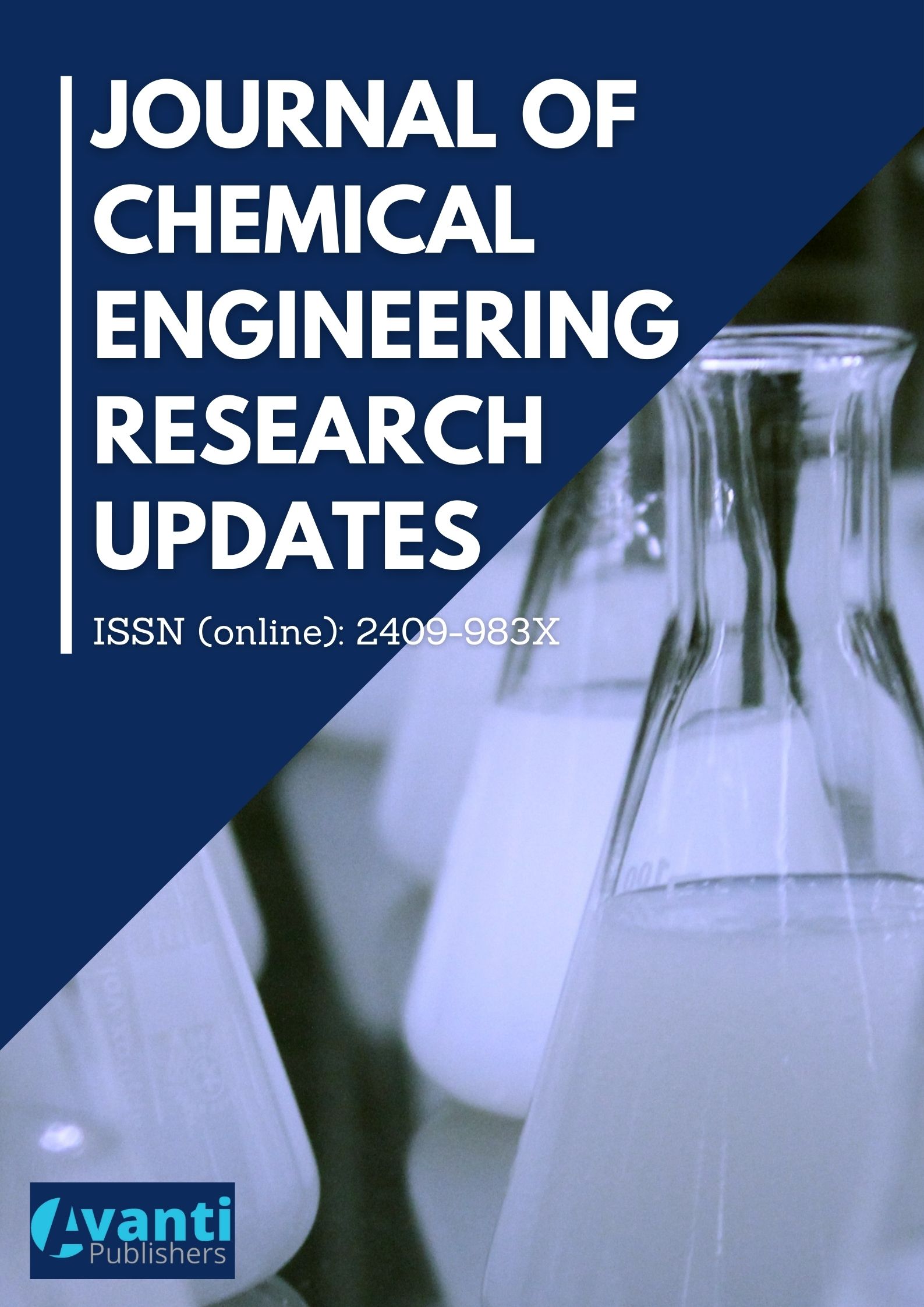Abstract
Water covers 70% of the planet Earth. Of the total volume of water on the planet, 2/3 (two-thirds) is in the form of ice or underground water. On the other hand, fresh water is an increasingly scarce resource in the world, with only 3% of the world's water being drinkable. Data from the United Nations (UN), indicate that approximately 1.1 billion inhabitants on planet Earth do not have access to fresh water. The same data also reveal that 2.7 billion inhabitants suffer from water scarcity for approximately one month a year. According to these data, water scarcity currently affects more than 40% of the world's population. This condition has driven the proposition of technological solutions to minimize the impact of difficulties in accessing this good [1].
Allied to all these aspects, in recent decades, industrial development and the growth of the world population have demanded a greater need for fresh water. At the same time, pollution and the reduction of surface water sources limit access to available freshwater resources [2].
Thus, there is a need for alternative water sources, leading to a focus on using previously technologies, with an emphasis on saltwater desalination. Many areas affected by freshwater scarcity are close to the sea, favoring implementing these technologies.
References
Rieu-Clarke A, Moynihan A, Magsig BO, UNESCO World Water Assessment Programme. Transboundary water governance and climate change adaptation: international law, policy guidelines and best practice application. Paris, France: UNESCO; 2015.
Resolução CONAMA N° 430. Ministério do Meio Ambiente. Conselho Nacional do Meio Ambiente, CONAMA. 2011. Brasil.
Singh S, Singh R, Sharma NR, Singh A. Ethanolic extract of cockroach wing powder as corrosion inhibitor for N80 steel in an ASTM D1141-98(2013) standard artificial seawater solution. Int J Electrochem Sci. 2021; 16: Article ID: 210841. https//doi.org/10.20964/2021.08.43
Alklaibi AM, Lior N. Membrane-distillation desalination: status and potential. Desalination. 2004; 171(2): 111-31. https://doi.org/10.1016/j.desal.2004.03.024
Duffie JA, Beckman WA. Solar engineering of thermal processes. 4th ed. Hoboken, New Jersey: John Wiley & Sons, Inc.; pp. 1-796.
Wang H, Xu X, Zhu G. Landscape changes and a salt production sustainable approach in the state of salt pan area decreasing on the coast of Tianjin, China. Sustainability. 2015; 7(8): 10078-97. https://doi:10.3390/su70810078
Bhattacharyya A. Solar stills for desalination of water in rural households. Int J Environ Sustain. 2013; 2(1): 21-30. https://doi:10.24102/ijes.v2i1.326
Singh G, Kumar S, Tiwari GN. Design, fabrication and performance evaluation of a hybrid photovoltaic thermal (PVT) double slope active solar still. Desalination. 2011; 277(1-3): 399-406. https://doi.org/10.1016/j.desal.2011.04.064
Phadatare, MK, Verma SK. Influence of water depth on internal heat and mass transfer in a plastic solar still. Desalination. 2007; 217: 267-75. https://doi.10.1016/j.desal.2007.03.006
Talbert SG, Eibling JA, Löf, GOG. Manual on solar distillation of saline water. Washington: U.S. Dept. of the Interior; 1970.
Cooper PI, Read WRW. Design philosophy and operating experience for Australian solar stills. Solar Energy. 1974; 16: 1-8. https://doi.org/10.1016/0038-092X(74)90037-1
Lawand TA. Systems for solar distillation. In: Freyh B, Fritz G, Eds. International Conference Appropriate Technologies for Semiarid Areas: Wind and Solar Energy for Water Supply, Berlin (West), 15 to 20 September 1975, pp. 201-50.
Buros OK. A history of desalting water in the Virgin Islands. Desalination. 1984; 50: 87-101. https://doi.org/10.1016/0011-9164(84)85020-1
Ho-Ming Y, Lin-Wen T, Lie-Chaing C. Basin-type solar distillers with operating pressure reduced for improved performance. Energy. 1985; 10(6): 683-8. https://doi.org/10.1016/0360-5442(85)90101-X
Mekhilef S, Saidur R, Safari A.A review on solar energy use in industries. Renewable Sustainable Energy Rev. 2011; 15(4): 1777-90. https://doi.org/10.1016/j.rser.2010.12.018
Kalogirou SA. Seawater desalination using renewable energy sources. Prog Energy Combus Sci. 2005; 31(3): 242-81. https://doi.org/10.1016/j.pecs.2005.03.001
Baum VA, Bairamov R. Prospects of solar stills in Turkmenia. Solar Energy. 1966; 10(1): 38-40. https://doi.org/10.1016/0038-092X(66)90070-3
Baum VA, Bairamov R. Heat and mass transfer processes in solar stills of hotbox type. Solor Energy. 1964; 8(3): 78-82. https://doi.org/10.1016/0038-092X(64)90081-7
Delyannis EE. Status of solar assisted desalination: A review. Desalination. 1987; 67: 3-19. https://doi.org/10.1016/0011-9164(87)90227-X
Delyannis A. Delyannis E. Recent solar distillation developments. Desalination. 1983; 45 (1-3): 361-9. https://doi.org/10.1016/0011-9164(83)87239-7
Monteiro J, Baptista A, Pinto G, Ribeiro L, Mariano H.Assessment of the use of solar desalination distillers to produce fresh water in arid areas. Sustainability. 2020; 12(1): 53-62. https://doi.org/10.3390/su12010053
Eckstrom R. Design and construction of the Symi still. Sun at Work. 1965; 10(1): 7.
Constantino EDG, Teixeira SFCF, Teixeira JCF, Barbosa FV. Innovative solar concentration systems and its potential application in Angola. Energies. 2022; 15(9): 7124-34. https://doi.org/10.3390/en15197124
Velmurugan V, Srithar K. Performance analysis of solar stills based on various factors affecting the productivity: A review. Renewable Sustainable Energy Rev. 2011; 15(2): 1294-1304. https://doi.org/10.1016/j.rser.2010.10.012
Mariano HQS. Estudo de sistema de produção de água potável através do processo de destilação solar. Departamento de Engenharia Mecânica, Instituto Superior de Engenharia do Porto, Portugal, 2019.
Belessiotis V, Kalogirou S, Delyannis E. Thermal solar desalination: methods and systems. Academic Press; Elsevier Ltd. 2016.
Tarazona-Romero BE, Campos-Celador A, Maldonado-Muñoz YA. Can solar desalination be small and beautiful? A critical review of existing technology under the appropriate technology paradigm. Energy Res Soc Sci. 2022; 88: 102510. https://doi.org/10.1016/j.erss.2022.102510
Hota SK, Hada SS, Keske C, Diaz G. Feasibility of desalination by solar stills for small community scale freshwater demand. J Clean Prod. 2022; 379(1): 134595. https://doi.org/10.1016/j.jclepro.2022.134595

This work is licensed under a Creative Commons Attribution-NonCommercial 4.0 International License.
Copyright (c) 2022 Antonio Andre Chivanga Barros, Adilson Narciso Francisco Pinto, Mário de Assunção Afonso Futa, Albino Joaquim Ngola, Chikunda Amões, Chelson Oliveira, Peterson Alves, Elma Mateus, Carlos Minunsidi, Tommaso de Pippo, Filipe Silvino de Pina Zau, Henrique Afonso




